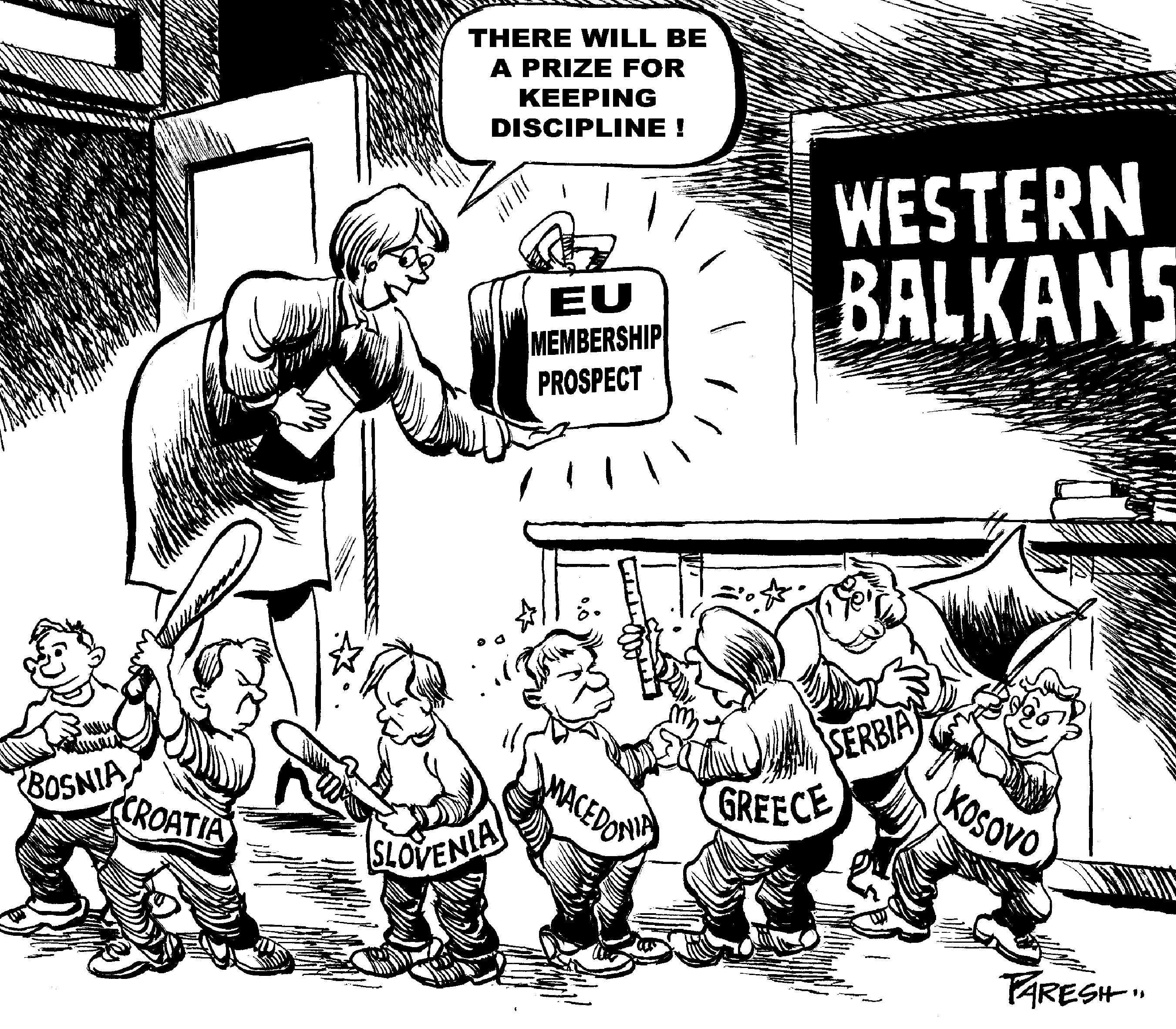2. The Challenges of EU Expansion
Paresh Nath, EU Membership Prospect Cartoon (February 23, 2009)
At the turn of the twenty-first century when the European Union was gaining strength as a supranational entity that united much of the European continent, the breakup of the former Yugoslavia posed a particularly thorny problem for European leaders. While some people saw the integration of the western Balkans into the European Union as the best way to help the region recover, others wondered whether they were sufficiently “European” for EU membership. Greece took the lead in addressing such concerns, arguing that EU inclusion was essential to promoting democracy and economic prosperity in the independent states that had emerged from the wreckage of ten years of civil war. Slovenia, the most developed of these states, was admitted to the European Union in 2007 and Croatia is on track to become the EU’s twenty-eighth member in 2013. Macedonia is currently a candidate country as it works to integrate EU legislation into national law. Bosnia, Kosovo, and Serbia’s admittance is less certain, however, for they have yet to fulfill the requirements for membership. In the political cartoon reprinted here, syndicated cartoonist Paresh Nath depicts the western Balkans and their champion, Greece, as unruly students in a classroom. As they bicker among themselves, the schoolteacher, who personifies the European Union, tries to regain control by offering them a prize in exchange for their cooperation.

DISCUSSION QUESTIONS
- Why do you think Nath chose to use a classroom as the setting for his cartoon? What meaning does it add to the illustration?
Question
Why do you think Nath chose to use a classroom as the setting for his cartoon? What meaning does it add to the illustration?
accept_blank_answers: true
points: 10Why do you think Nath chose to use a classroom as the setting for his cartoon? What meaning does it add to the illustration? - What does this cartoon suggest about the challenges inherent in EU expansion? In what ways does the vision of a united Europe clash with political realities on the ground?
Question
What does this cartoon suggest about the challenges inherent in EU expansion? In what ways does the vision of a united Europe clash with political realities on the ground?
accept_blank_answers: true
points: 10What does this cartoon suggest about the challenges inherent in EU expansion? In what ways does the vision of a united Europe clash with political realities on the ground? - What are the advantages and disadvantages of studying a period of time through its political cartoons?
Question
What are the advantages and disadvantages of studying a period of time through its political cartoons?
accept_blank_answers: true
points: 10What are the advantages and disadvantages of studying a period of time through its political cartoons?